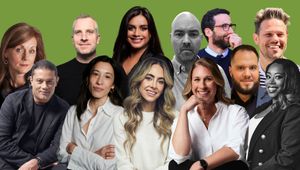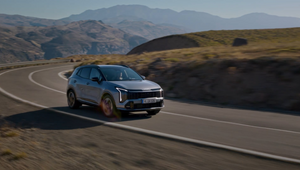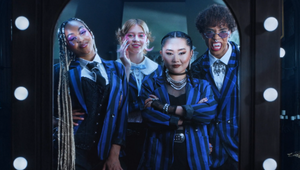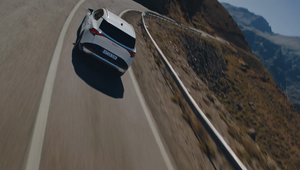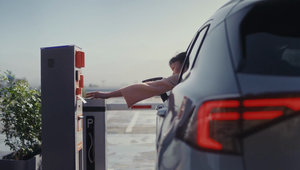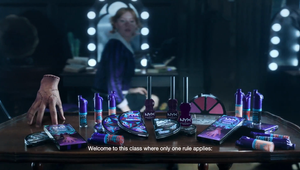
Gijs Determeijer: “There Shouldn’t Be a Strict Distinction Between Creation and Production"

At OKAY STUDIO we’ve become known for eye-opening campaigns, made by creatives that go that little bit further - ensuring that the work really means something.
We believe that advertising, and film in particular, has the power to enact cultural shifts that will take us closer to a society that is fairer for all. That is why we are thrilled to support this LBB interview series to hear about our industry peers’ favourite groundbreaking work, the kind of pieces that make you stop and think.
Here, we sit down with Gijs Determeijer, partner and producer at HALAL. The Amsterdam based production company and creative studio has a reputation for its boundary-pushing nature, and following the recent launch of its HALAL Studios division, Gijs tells us how he got into the creative business, how he makes it through the different stages of production - ‘sweaty palms’ and all - and why ‘youth will always be the future.’
LBB> This series is all about boundary-pushing and radical creative. In the context of your career, what projects and experiences have tapped into that?
Gijs Determeijer> It’s quite hard to push boundaries in advertising production, because in general advertising usually follows popular culture. Luckily at HALAL, we also do documentaries and fiction projects. Some of the films we have made over the years have really pushed boundaries. A couple of examples: We made the feature film Prince with director Sam de Jong in 2015 with a crew that consisted of recent graduates, where it was everyone’s first feature film. It was nominated nine times at the Netherlands Film Festival and even had a release in the UK and US! The documentary Genderbende we made with Sophie Dros in 2017 normalised gender fluidity for the first time, and our upcoming fiction and documentary crossover ‘Last Ride of the Wolves’, which stars director Alberto de Michele and his real father who is an Italian crook and his band of thieves playing themselves are films I am super proud of.
Trying to get advertising agencies and clients to make commercials with those same exciting makers is my goal every day.
LBB> For many, the best kind of content pushes on boundaries. Was there a particular campaign of this kind that triggered your urge to get into the business in the first place?
Gijs> I never really gave my career much thought to begin with! I was working as a First AD and was producing some photoshoots on the side. Set life can be quite intense and when I became a part-time single dad I needed something that wasn’t 6.30 am to 9 pm every single day…
I had been working with the guys at 100% HALAL as a first AD and we really liked each other. They wanted to set up a commercial department, and thought I could be the smooth talker dealing with agencies, while they could focus on music videos, comedy sketches, and documentaries. So in a way, I didn’t find the business, it found me.
LBB> From your work mentoring talent in the industry, and from judging the YDA, what excites you the most? What stands out?
Gijs> It is easy to find copycats, but when you find someone with raw talent you know it immediately. You can hear their voice, and maybe they didn’t have the budget to realise their dreams yet - but you can feel it. If something made by a young person makes you feel strong emotions, whether it makes you cry, or dream about it afterward — you know it.
Looking at it from another perspective, seeing stories be told by previously unheard voices excites me too, and people who are creating stories about their communities. Currently, we are developing a documentary on the ball house scene with a nonbinary young director who is very much part of the scene, and you feel it in their footage. It’s amazing.
Another thing I love about young people is that they just go out and do it, and can do it all: direct it, shoot it, edit it, make music.
LBB> I’d love to talk about HALAL Studios - I love how you say you’re ‘craft-obsessed’ - what does that mean to you? What does this new move represent for the wider HALAL community?
Gijs> In recent years we've increasingly been working directly for brands such as Lynk & Co, Asics, Nike, Ace & Tate, Wrangler, and VanMoof, to name a few, and with HALAL Studios we want to give that a big boost. We want to give the craft (in strategy, concept development, and execution) centre space. We want to close the gap for brands looking to connect with the current zeitgeist. Therefore with HALAL Studios we’re focusing on brands that do not house their campaigns with large agencies but want to sit down directly with creators who understand or are part of the target group. HALAL Studios, like HALAL, wants to intertwine fashion, music, and art with youth culture - that's in the DNA of the production company. The same is true for CD Pascal Duval - former head of creative at ASOS - and his team at HALAL Studios and the network, but strategically and conceptually anchored. Above all, we believe alongside our clients that there shouldn’t be a strict distinction between creation and production; in the end, we are all makers.
LBB> How does HALAL push boundaries?
Gijs> HALAL pushes boundaries by constantly reinventing itself, we can’t sit still or settle.
HALAL Studios is always innovating - and there are one or two new ventures coming later this year! We’re bringing together all the fields we work in and introducing unlikely makers to the industry. It’s what I live for.
LBB> With your own work, is there one particular campaign that stands out to you from your career as especially ground breaking?
Gijs> When the first lockdown hit, our industry came to a shrieking halt and everybody panicked. As a result, we launched Lockdown Studios to highlight everything that was still possible, and it resulted in our Škoda Shot at Home campaign, shot in the homes of three of our directors with miniature cars. The campaign went viral because it was just what the world needed at that time. Looking back on it, it was also by far the greenest car campaign ever made! Crews of two people and no travel, or actual cars needed.
LBB> And from that, what are some of your favourite HALAL projects? The range is astounding.
Gijs> I love the commercial we shot last summer with Paul Geusebroek in Kiev for VanMoof. It seems like all commercials are just going faster and faster, and we jump from one place to another, but in this film, we freeze time and we stay in one place. It is a truly cinematic experience. Another favourite is ‘May’. Self-taught director Madja Amin started with music videos and commercials and after doing a short film together we made this TV film. It is a beautifully crafted story about a mute hitman who has to choose between his career and his upcoming baby. It won Best TV film this year which made me so proud!
The ‘Young Love Book’ photo book we made with Karen Rosetzsky in 2015 is another of my favourites. It shows young couples in super real and intimate moments. We self-published it and have sold close to 5000 copies worldwide. Walking into a bookshop in LA and seeing it displayed blew my mind! What was also great is that we got a lot of requests after that for Karen to shoot real lovers in campaigns.
LBB> OKAY STUDIO is passionate about the power of great post-production, particularly when working on projects that break cultural taboos. From your perspective, in what ways can top-quality post elevate a piece of work?
Gijs> I think we have all experienced the different phases we go through in making films. First, you get an OK script and your director makes a killer DIY and you think it’s going to be amazing! Then you budget it and you think, maybe this won’t be THAT amazing…And then you go on recce and you think, shit, this is never going to work. Then you’re on set, the energy is great and you think, this is going to be the best film ever! Then you see the material and the first offline edit and you get sweaty palms: ‘Is this ever going to work?’ And then, if you have enough time and great post people to work with, you see the magic happen. The film is obviously made in post, not to say, we’ll fix it in post, but edit, grade, VFX, music, and sound make the film!
LBB> Your recent campaign with Unicef and Soursop really stands out as both thought-provoking and in many ways, shocking - what was your experience like working on it?
Gijs> First of all, it was a lot of fun for HALAL Studios to work together with our friends at Soursop to develop the stories. Then reality hits you and you actually have to make it for a tiny production budget, which obviously feels right when working for an NGO.
Luckily, we have a super close relationship with Western Productions in Barcelona, so they really saved the day by helping us create it. The director, Thessa Meijer, did a great job, but when I saw the offlines I went through the same panic waves as I mentioned before - ‘Is this going to work? Then Glassworks really made the film with the animated faucet and brought magic to it.
LBB> Finally, how do you stay creatively inspired? And what guidance would you give to someone wanting to tap into their own creativity?
Gijs> Unfortunately, we can’t really travel, plus museums and galleries are closed in Amsterdam again, so it is hard to get fresh input. Visiting Kiev for the first time this year was my personal highlight, the hotspot of Europe for the next 10 years without a doubt!
To keep sane, I swim outside in the canals every morning.
And even though I love older people, old music, and old films, I think surrounding yourself with young people and putting them in positions where they can shine is the best way to keep inspired. The youth will always be the future.









